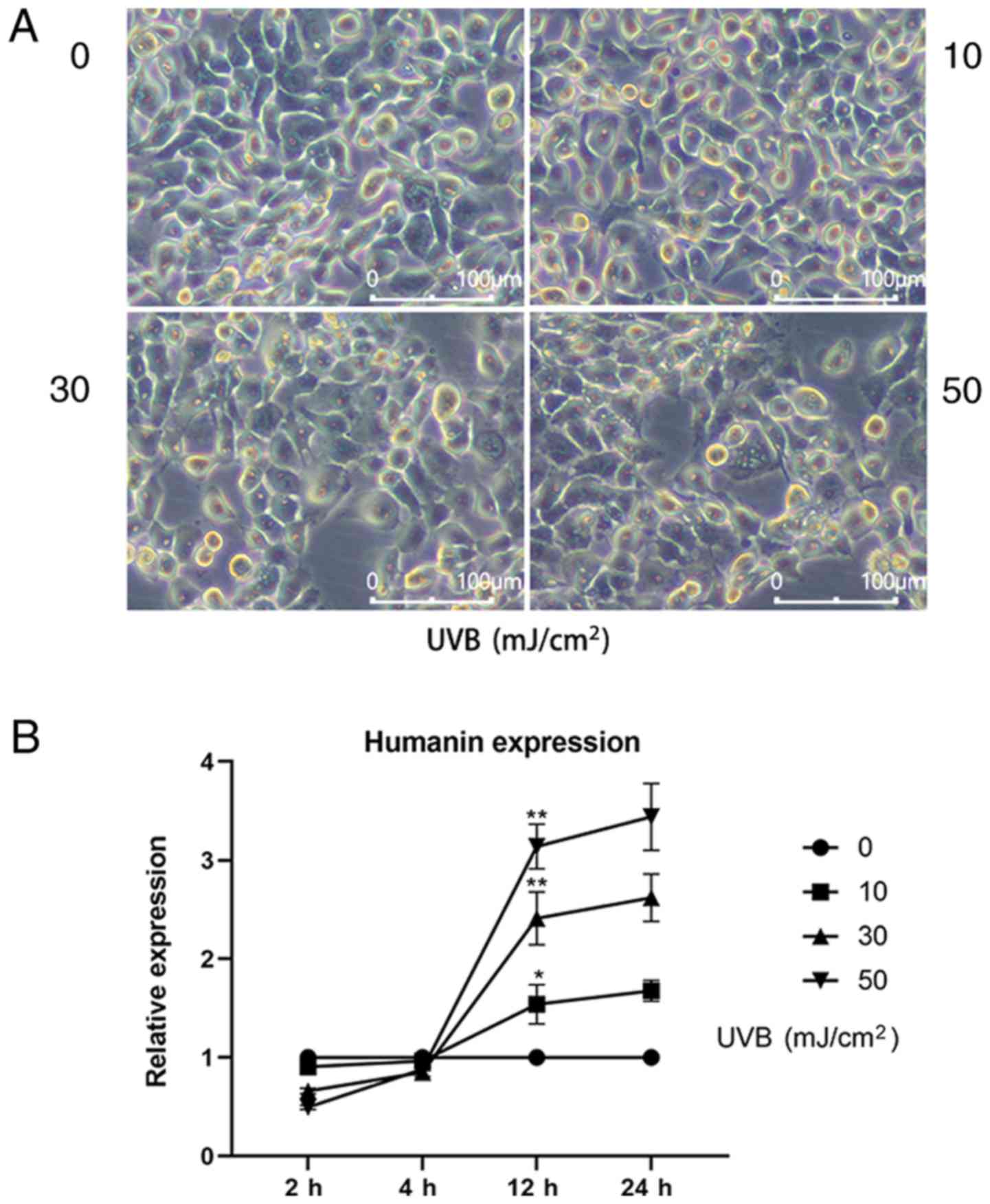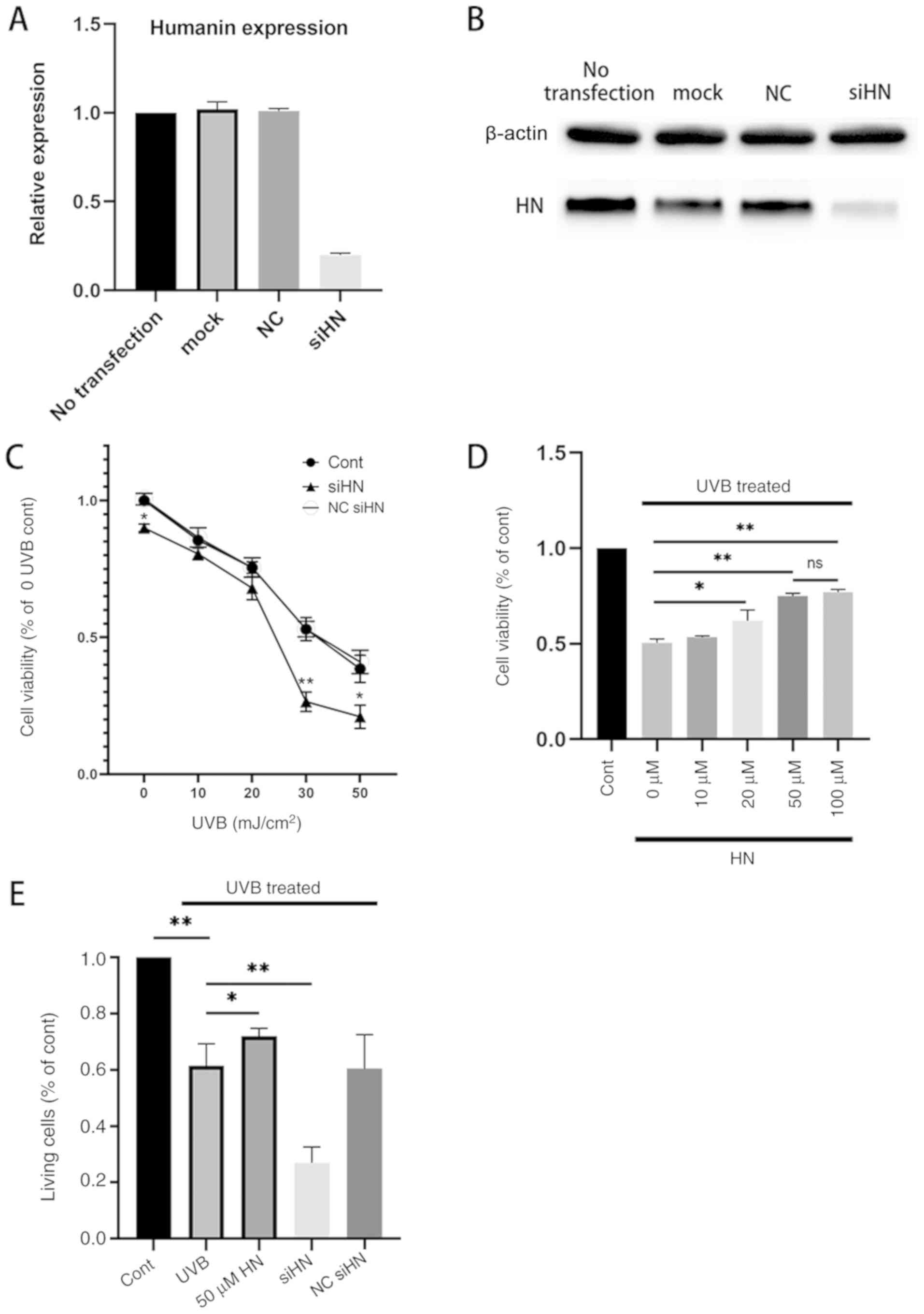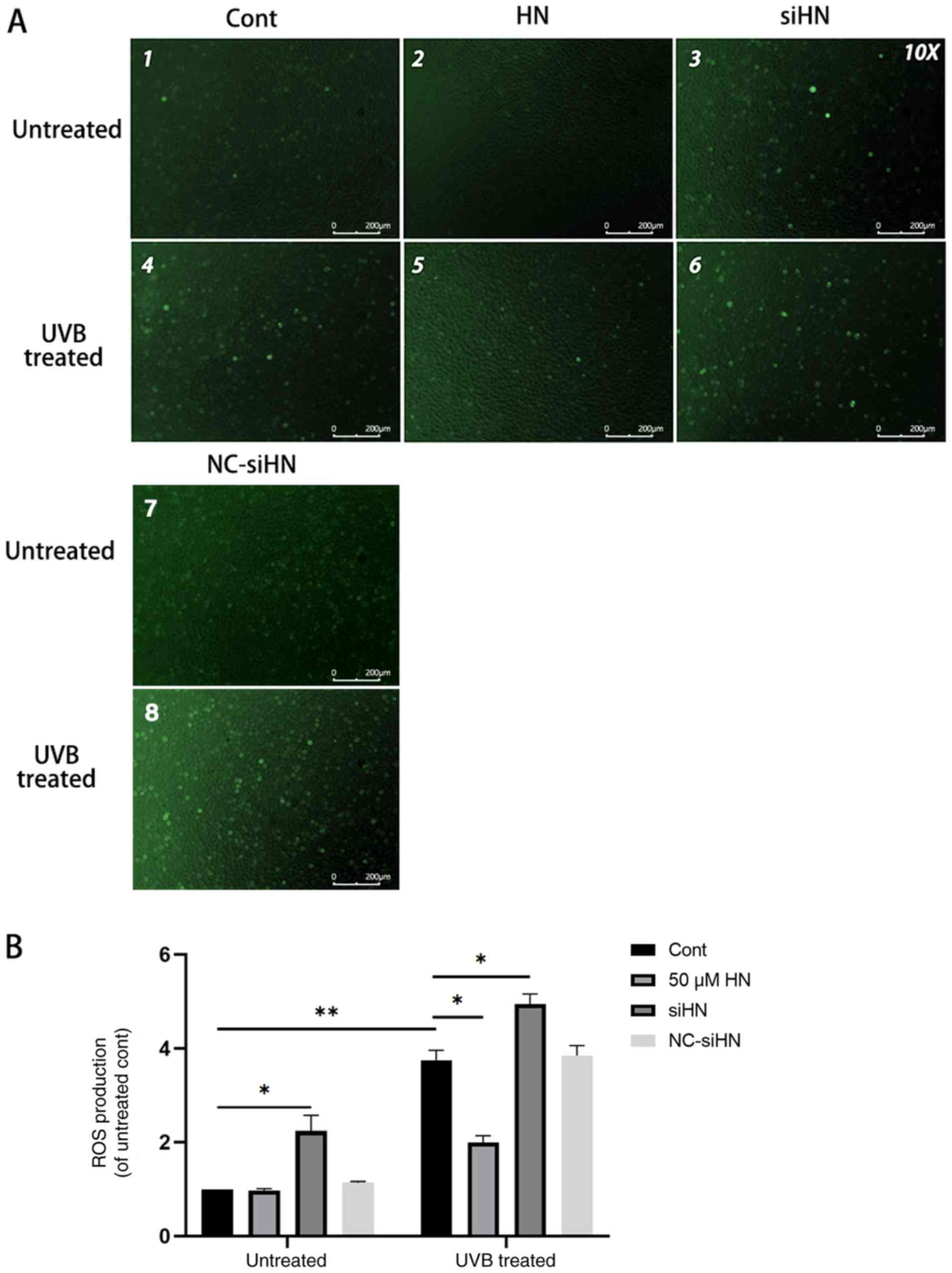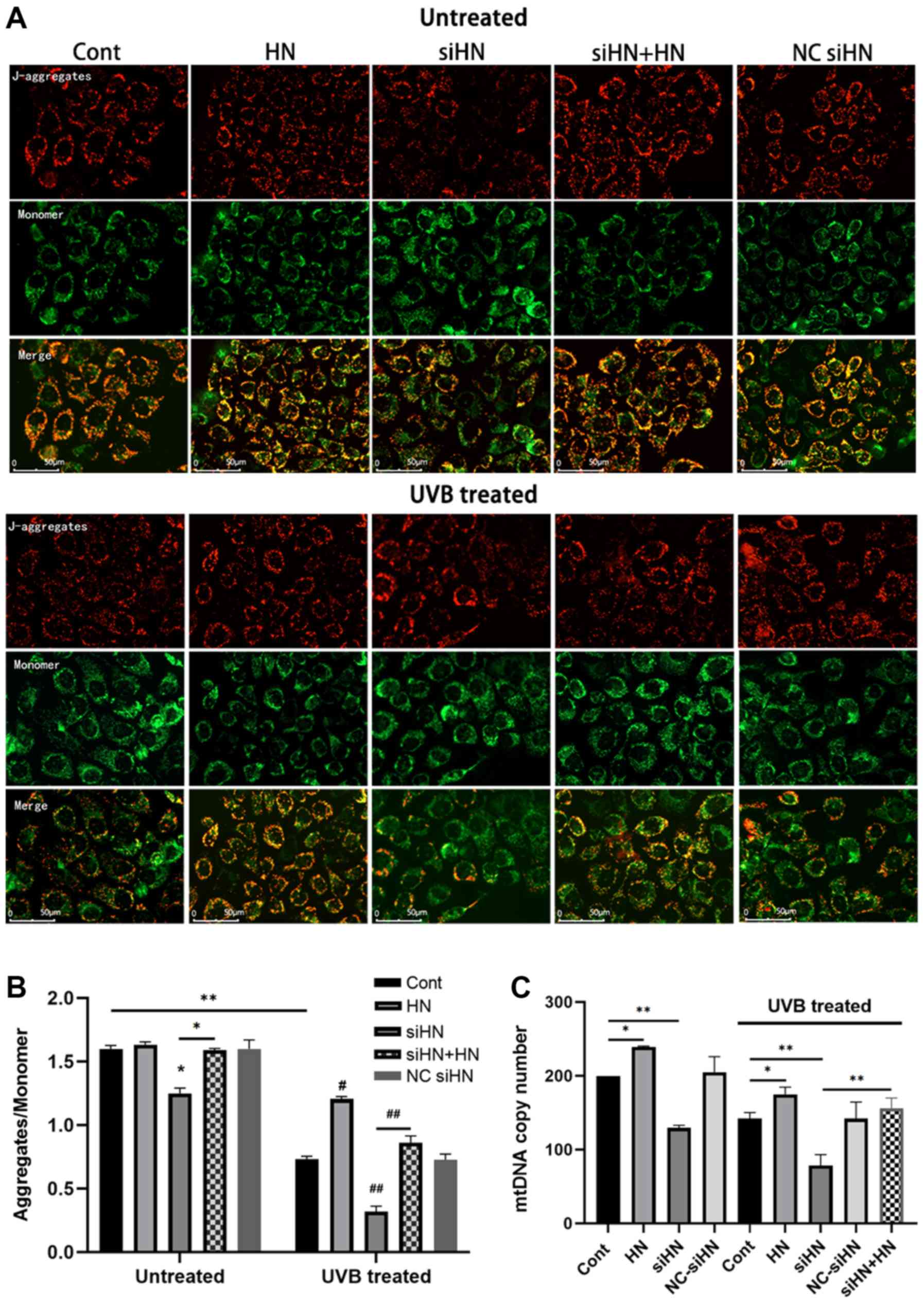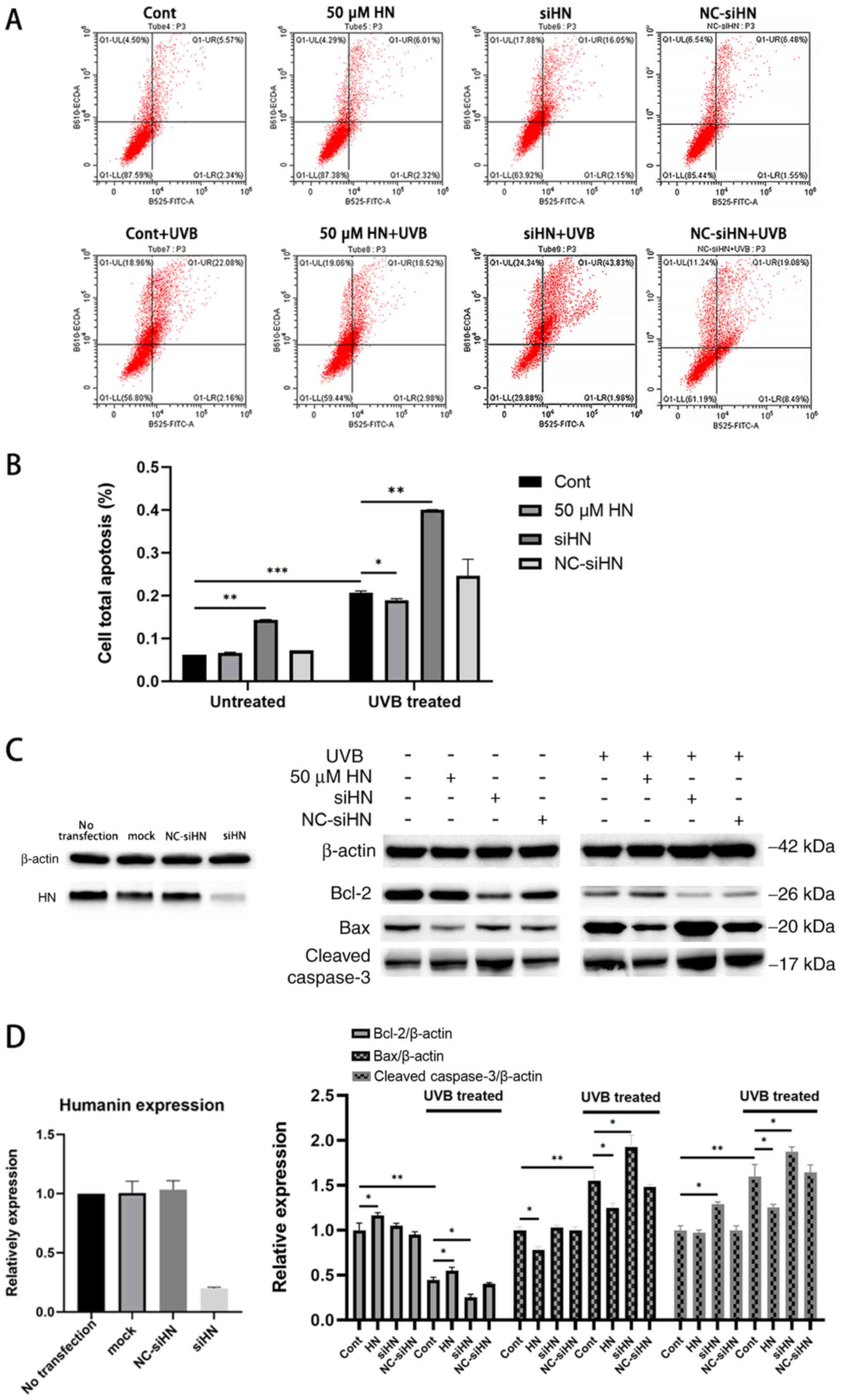|
1
|
Skinner C and Miraldi Utz V:
Pharmacological approaches to restoring lens transparency: Real
world applications. Ophthalmic Genet. 38:201–205. 2017. View Article : Google Scholar : PubMed/NCBI
|
|
2
|
Beebe DC, Holekamp NM and Shui YB:
Oxidative damage and the prevention of age-related cataracts.
Ophthalmic Res. 44:155–165. 2010. View Article : Google Scholar : PubMed/NCBI
|
|
3
|
Wu D, Zhao J, Wu D and Zhang J:
Ultraviolet A exposure induces reversible disruption of gap
junction intercellular communication in lens epithelial cells. Int
J Mol Med. 28:239–245. 2011.PubMed/NCBI
|
|
4
|
Li WC and Spector A: Lens epithelial cell
apoptosis is an early event in the development of UVB-induced
cataract. Free Radic Biol Med. 20:301–311. 1996. View Article : Google Scholar : PubMed/NCBI
|
|
5
|
Löfgren S: Solar ultraviolet radiation
cataract. Exp Eye Res. 156:112–116. 2017. View Article : Google Scholar : PubMed/NCBI
|
|
6
|
Wolfle U, Esser PR, Simon-Haarhaus B,
Martin SF, Lademann J and Schempp CM: UVB-induced DNA damage,
generation of reactive oxygen species, and inflammation are
effectively attenuated by the flavonoid luteolin in vitro and in
vivo. Free Radic Biol Med. 50:1081–1093. 2011. View Article : Google Scholar : PubMed/NCBI
|
|
7
|
Hightower KR: A review of the evidence
that ultraviolet irradiation is a risk factor in cataractogenesis.
Doc Ophthalmol. 88:205–220. 1994. View Article : Google Scholar : PubMed/NCBI
|
|
8
|
Dillon J: Sunlight exposure and cataract.
JAMA. 28:2291999. View Article : Google Scholar
|
|
9
|
Ji Y, Cai L, Zheng T, Ye H, Rong X, Rao J
and Lu Y: The mechanism of UVB irradiation induced-apoptosis in
cataract. Mol Cell Biochem. 401:87–95. 2015. View Article : Google Scholar : PubMed/NCBI
|
|
10
|
Berthoud VM and Beyer EC: Oxidative
stress, lens gap junctions, and cataracts. Antioxid Redox Signal.
11:339–353. 2009. View Article : Google Scholar : PubMed/NCBI
|
|
11
|
Gupta SK, Trivedi D, Srivastava S, Joshi
S, Halder N and Verma SD: Lycopene attenuates oxidative stress
induced experimental cataract development: An in vitro and in vivo
study. Nutrition. 19:794–799. 2003. View Article : Google Scholar : PubMed/NCBI
|
|
12
|
Guo B, Zhai D, Cabezas E, Welsh K,
Nouraini S, Satterthwait AC and Reed JC: Human in peptide
suppresses apoptosis by interfering with Bax activation. Nature.
423:456–461. 2003. View Article : Google Scholar : PubMed/NCBI
|
|
13
|
Kin T, Sugie K, Hirano M, Goto YI, Nishino
I and Ueno S: Humanin expression in skeletal muscles of patients
with chronic progressive external ophthalmoplegia. J Hum Genet.
51:555–558. 2006. View Article : Google Scholar : PubMed/NCBI
|
|
14
|
Wang D, Li H, Yuan H, Zheng M, Bai C, Chen
L and Pei X: Human in delays apoptosis in K562 cells by
downregulation of P38 MAP kinase. Apoptosis. 10:963–971. 2005.
View Article : Google Scholar : PubMed/NCBI
|
|
15
|
Sreekumar PG, Ishikawa K, Spee C, Mehta
HH, Wan J, Yen K, Cohen P, Kannan R and Hinton DR: The
mitochondrial-derived peptide human in protects RPE cells from
oxidative stress, senescence, and mitochondrial dysfunction. Invest
Ophthalmol Vis Sci. 57:1238–1253. 2016. View Article : Google Scholar : PubMed/NCBI
|
|
16
|
Klein LE, Cui L, Gong Z, Su K and Muzumdar
R: A humanin analog decreases oxidative stress and preserves
mitochondrial integrity in cardiac myoblasts. Biochem Biophys Res
Commun. 440:197–203. 2013. View Article : Google Scholar : PubMed/NCBI
|
|
17
|
Hashimoto Y, Niikura T, Tajima H, Yasukawa
T, Sudo H, Ito Y, Kita Y, Kawasumi M, Kouyama K, Doyu M, et al: A
rescue factor abolishing neuronal cell death by a wide spectrum of
familial Alzheimer's disease genes and A beta. Proc Natl Acad Sci
USA. 98:6336–6341. 2001. View Article : Google Scholar : PubMed/NCBI
|
|
18
|
Kariya S, Takahashi N, Ooba N, Kawahara M,
Nakayama H and Ueno S: Humanin inhibits cell death of
serum-deprived PC12h cells. Neuroreport. 13:903–907. 2002.
View Article : Google Scholar : PubMed/NCBI
|
|
19
|
Bachar AR, Scheffer L, Schroeder AS,
Nakamura HK, Cobb LJ, Oh YK, Lerman LO, Pagano RE, Cohen P and
Lerman A: Humanin is expressed in human vascular walls and has a
cytoprotective effect against oxidized LDL-induced oxidative
stress. Cardiovasc Res. 88:360–366. 2010. View Article : Google Scholar : PubMed/NCBI
|
|
20
|
Livak KJ and Schmittgen TD: Analysis of
relative gene expression data using real-time quantitative PCR and
the 2(-Delta Delta C(T)) method. Methods. 25:402–408. 2001.
View Article : Google Scholar : PubMed/NCBI
|
|
21
|
Yu Y, Jiang H, Li H, Song W and Xia X:
Alpha-A-crystallin protects lens epithelial cell-derived iPSC-like
cells against apoptosis induced by oxidative stress. Cell
Reprogram. 18:327–332. 2016. View Article : Google Scholar : PubMed/NCBI
|
|
22
|
Rwei P, Alex Gong CS, Luo LJ, Lin MB, Lai
JY and Liu HL: In vitro investigation of ultrasound-induced
oxidative stress on human lens epithelial cells. Biochem Biophys
Res Commun. 482:954–960. 2017. View Article : Google Scholar : PubMed/NCBI
|
|
23
|
Zorov DB, Juhaszova M and Sollott SJ:
Mitochondrial reactive oxygen species (ROS) and ROS-induced ROS
release. Physiol Rev. 94:909–950. 2014. View Article : Google Scholar : PubMed/NCBI
|
|
24
|
Yen K, Lee C, Mehta H and Cohen P: The
emerging role of the mitochondrial-derived peptide humanin in
stress resistance. J Mol Endocrinol. 50:R11–R19. 2013. View Article : Google Scholar : PubMed/NCBI
|
|
25
|
West SK, Longstreth JD, Munoz BE, Pitcher
HM and Duncan DD: Model of risk of cortical cataract in the US
population with exposure to increased ultraviolet radiation due to
stratospheric ozone depletion. Am J Epidemiol. 162:1080–1088. 2005.
View Article : Google Scholar : PubMed/NCBI
|
|
26
|
Yam JC and Kwok AK: Ultraviolet light and
ocular diseases. Int Ophthalmol. 34:383–400. 2014. View Article : Google Scholar : PubMed/NCBI
|
|
27
|
Hua H, Yang T, Huang L, Chen R, Li M, Zou
Z, Wang N, Yang D and Liu Y: Protective effects of lanosterol
synthase up-regulation in UV-B-induced oxidative Stress. Front
Pharmacol. 10:9472019. View Article : Google Scholar : PubMed/NCBI
|
|
28
|
Bodzioch M, Lapicka-Bodzioch K, Zapala B,
Kamysz W, Kiec-Wilk B and Dembinska-Kiec A: Evidence for potential
functionality of Nuclearly-encoded humanin isoforms. Genomics.
94:247–256. 2009. View Article : Google Scholar : PubMed/NCBI
|
|
29
|
Ramanjaneya M, Bettahi I, Jerobin J,
Chandra P, Abi Khalil C, Skarulis M, Atkin SL and Abou-Samra AB:
Mitochondrial-derived peptides are down regulated in diabetes
subjects. Front Endocrinol (Lausanne). 10:3312019. View Article : Google Scholar : PubMed/NCBI
|
|
30
|
Liu L, Yu R, Shi Y, Dai Y, Zeng Z, Guo X,
Ji Q, Wang G and Zhong J: Transduced protein transduction domain
linked HSP27 protected LECs against UVB radiation-induced damage.
Exp Eye Res. 120:36–42. 2014. View Article : Google Scholar : PubMed/NCBI
|
|
31
|
Marchetti MA, Lee W, Cowell TL, Wells TM,
Weissbach H and Kantorow M: Silencing of the methionine sulfoxide
reductase A gene results in loss of mitochondrial membrane
potential and increased ROS production in human lens cells. Exp Eye
Res. 83:1281–1286. 2006. View Article : Google Scholar : PubMed/NCBI
|
|
32
|
Ylä-Herttuala S: Oxidized LDL and
atherogenesis. Ann N Y Acad Sci. 874:134–137. 1999. View Article : Google Scholar : PubMed/NCBI
|
|
33
|
Stadtman ER and Levine RL: Protein
oxidation. Ann N Y Acad Sci. 899:191–208. 2000. View Article : Google Scholar : PubMed/NCBI
|
|
34
|
Wu H, Lin L, Giblin F, Ho YS and Lou MF:
Glutaredoxin 2 knockout increases sensitivity to oxidative stress
in mouse lense pithelial cells. Free Radic Biol Med. 51:2108–2117.
2011. View Article : Google Scholar : PubMed/NCBI
|
|
35
|
Brooks MM, Neelam S, Fudala R, Gryczynski
I and Cammarata PR: Lenticular mitoprotection. Part A: Monitoring
mitochondrial depolarization with JC-1 and artifactual fluorescence
by the glycogen synthase kinase-3β inhibitor, SB216763. Mol Vis.
19:1406–1412. 2013.PubMed/NCBI
|
|
36
|
Ristow M, Zarse K, Oberbach A, Klöting N,
Birringer M, Kiehntopf M, Stumvoll M, Kahn CR and Blüher M:
Antioxidants prevent health-promoting effects of physical exercise
in humans. Proc Natl Acad Sci USA. 106:8665–8660. 2009. View Article : Google Scholar : PubMed/NCBI
|
|
37
|
Campbell CT, Kolesar JE and Kaufman BA:
Mitochondrial transcription factor A regulates mitochondrial
transcriptioni nitiation, DNA packaging, and genome copy number.
Biochim Biophys Acta. 1819:921–929. 2012. View Article : Google Scholar : PubMed/NCBI
|
|
38
|
Lee C, Wu SB, Hong CH, Liao WT, Wu CY,
Chen GS, Wei YH and Yu HS: Aberrant cell proliferation by enhanced
mitochondrial biogenesis via mtTFA in arsenical skin cancers. Am J
Pathol. 178:2066–2076. 2011. View Article : Google Scholar : PubMed/NCBI
|
|
39
|
Wu Q, Guo D, Bi H, Wang D and Du Y: UVB
irradiation-induced dysregulation of plasma membrane calcium
ATPase1 and intracellular calcium homeostasis in human lens
epithelial cells. Mol Cell Biochem. 382:263–272. 2013. View Article : Google Scholar : PubMed/NCBI
|
|
40
|
Shefa U, Jeong NY, Song IO, Chung HJ, Kim
D, Jung J and Huh Y: Mitophagy links oxidative stress conditions
and neurodegenerative diseases. Neural Regen Res. 14:749–756. 2019.
View Article : Google Scholar : PubMed/NCBI
|
|
41
|
Gong Z, Tasset I, Diaz A, Anguiano J, Tas
E, Cui L, Kuliawat R, Liu H, Kühn B, Cuervo AM and Muzumdar R:
Humanin is an endogenous activator of chaperone-mediated autophagy.
J Cell Biol. 217:635–647. 2018. View Article : Google Scholar : PubMed/NCBI
|
|
42
|
Han K, Jia N, Zhong Y and Shang X:
S14G-humanin alleviates insulin resistance and increases autophagy
in neurons of APP/PS1 transgenic mouse. J Cell Biochem.
119:3111–3117. 2018. View Article : Google Scholar : PubMed/NCBI
|
|
43
|
Wride MA: Lens fibre cell differentiation
and organelle loss: Many paths lead to clarity. Philos Trans R Soc
Lond B Biol Sci. 366:1219–1233. 2011. View Article : Google Scholar : PubMed/NCBI
|
|
44
|
Brennan LA, McGreal-Estrada R, Logan CM,
Cvekl A, Menko AS and Kantorow M: BNIP3L/NIX is required for
elimination of mitochondria, endoplasmic reticulum and Golgi
apparatus during eye lens organelle-free zone formation. Exp Eye
Res. 74:173–184. 2018. View Article : Google Scholar
|
|
45
|
Costello MJ, Brennan LA, Basu S, Chauss D,
Mohamed A, Gilliland KO, Johnsen S, Menko S and Kantorow M:
Autophagy and mitophagy participate in ocular lens organelle
degradation. Exp Eye Res. 116:141–150. 2013. View Article : Google Scholar : PubMed/NCBI
|
|
46
|
Chen J, Ma Z, Jiao X, Fariss R, Kantorow
WL, Kantorow M, Pras E, Frydman M, Pras E, Riazuddin S, et al:
Mutations in FYCO1 cause autosomal-recessive congenital cataracts.
Am J Hum Genet. 88:827–838. 2011. View Article : Google Scholar : PubMed/NCBI
|
|
47
|
Balaban RS, Nemoto S and Finkel T:
Mitochondria, oxidants, and aging. Cell. 120:483–495. 2005.
View Article : Google Scholar : PubMed/NCBI
|
|
48
|
Gross A, McDonnell JM and Korsmeyer SJ:
BCL-2 family members and the mitochondria in apoptosis. Genes Dev.
13:1899–1911. 1999. View Article : Google Scholar : PubMed/NCBI
|
|
49
|
Gottardo MF, Ayala MM, Ferraris J, Zárate
S, Pisera D, Candolfi M, Jaita G and Seilicovich A: Humanin
inhibits apoptosis in pituitary tumor cells through several
signaling pathways including NF-κB activation. J Cell Commun
Signal. 11:329–340. 2017. View Article : Google Scholar : PubMed/NCBI
|
|
50
|
Roy S: Caspases at the heart of the
apoptotic cell death pathway. Chemical Res Toxicol. 13:961–962.
2000. View Article : Google Scholar
|
|
51
|
Andersson M, Honarvar A, Sjöstrand J,
Peterson A and Karlsson JO: Decreased caspase-3 activity in human
lens epithelium from posterior sub capsular cataracts. Exp Eye Res.
76:175–182. 2003. View Article : Google Scholar : PubMed/NCBI
|
|
52
|
Yao H, Tang X, Shao X, Feng L, Wu N and
Yao K: Parthenolide protects human lens epithelial cells from
oxidative stress-induced apoptosis via inhibition of activation of
caspase-3 and caspase-9. Cell Res. 17:565–571. 2007. View Article : Google Scholar : PubMed/NCBI
|
|
53
|
Muzumdar RH, Huffman DM, Atzmon G,
Buettner C, Cobb LJ, Fishman S, Budagov T, Cui L, Einstein FH,
Poduval A, et al: Humanin: A novel central regulator of peripheral
insulin action. PLoS One. 4:e63342009. View Article : Google Scholar : PubMed/NCBI
|















